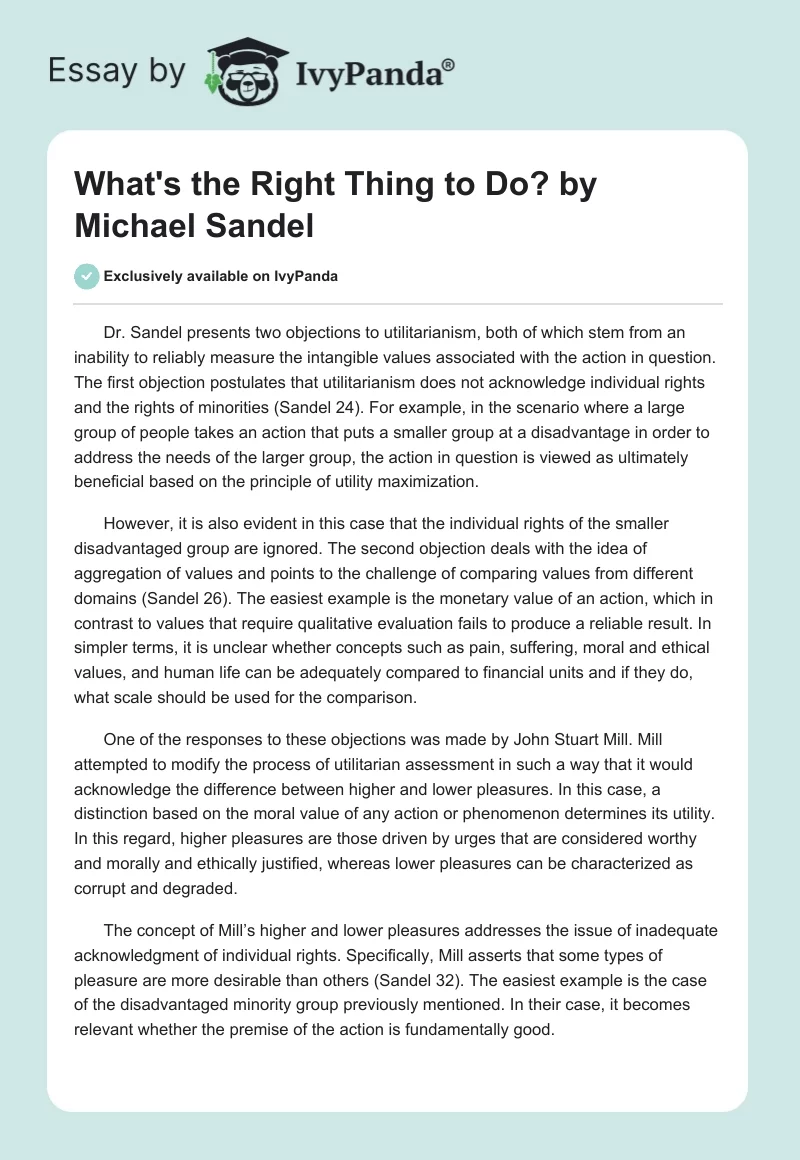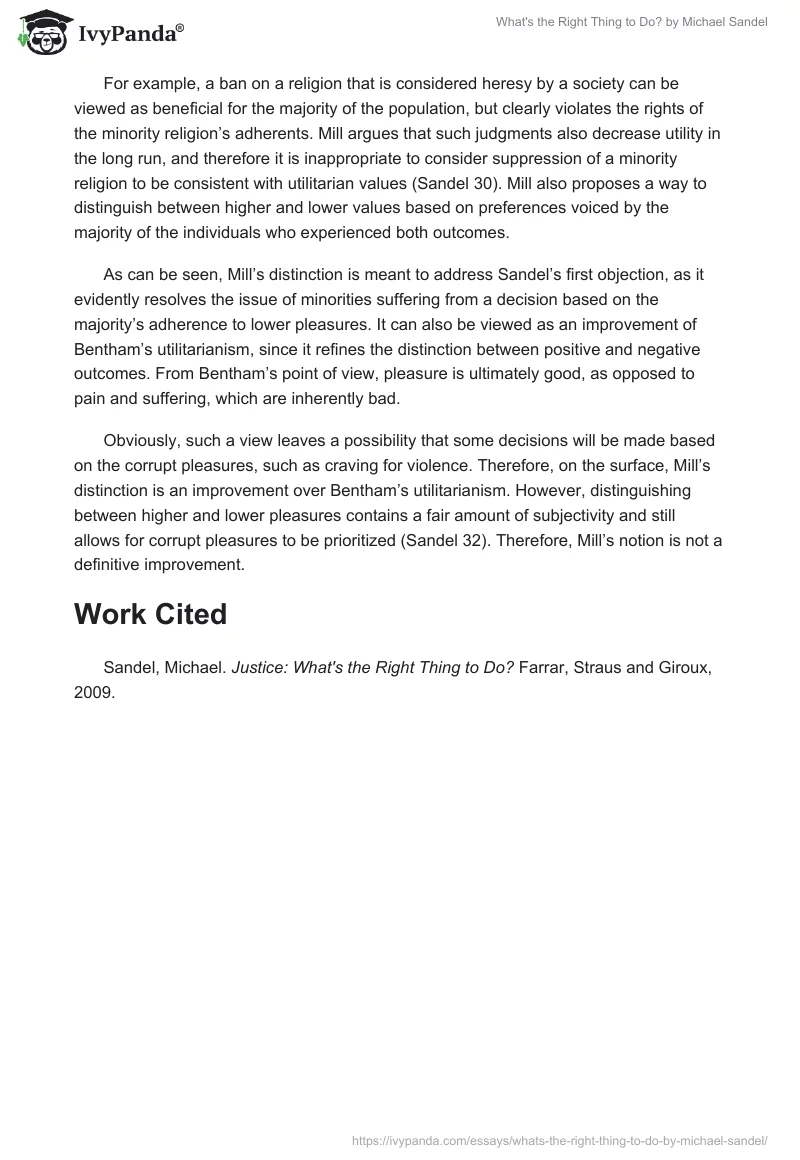Dr. Sandel presents two objections to utilitarianism, both of which stem from an inability to reliably measure the intangible values associated with the action in question. The first objection postulates that utilitarianism does not acknowledge individual rights and the rights of minorities (Sandel 24). For example, in the scenario where a large group of people takes an action that puts a smaller group at a disadvantage in order to address the needs of the larger group, the action in question is viewed as ultimately beneficial based on the principle of utility maximization.
However, it is also evident in this case that the individual rights of the smaller disadvantaged group are ignored. The second objection deals with the idea of aggregation of values and points to the challenge of comparing values from different domains (Sandel 26). The easiest example is the monetary value of an action, which in contrast to values that require qualitative evaluation fails to produce a reliable result. In simpler terms, it is unclear whether concepts such as pain, suffering, moral and ethical values, and human life can be adequately compared to financial units and if they do, what scale should be used for the comparison.
One of the responses to these objections was made by John Stuart Mill. Mill attempted to modify the process of utilitarian assessment in such a way that it would acknowledge the difference between higher and lower pleasures. In this case, a distinction based on the moral value of any action or phenomenon determines its utility. In this regard, higher pleasures are those driven by urges that are considered worthy and morally and ethically justified, whereas lower pleasures can be characterized as corrupt and degraded.
The concept of Mill’s higher and lower pleasures addresses the issue of inadequate acknowledgment of individual rights. Specifically, Mill asserts that some types of pleasure are more desirable than others (Sandel 32). The easiest example is the case of the disadvantaged minority group previously mentioned. In their case, it becomes relevant whether the premise of the action is fundamentally good.
For example, a ban on a religion that is considered heresy by a society can be viewed as beneficial for the majority of the population, but clearly violates the rights of the minority religion’s adherents. Mill argues that such judgments also decrease utility in the long run, and therefore it is inappropriate to consider suppression of a minority religion to be consistent with utilitarian values (Sandel 30). Mill also proposes a way to distinguish between higher and lower values based on preferences voiced by the majority of the individuals who experienced both outcomes.
As can be seen, Mill’s distinction is meant to address Sandel’s first objection, as it evidently resolves the issue of minorities suffering from a decision based on the majority’s adherence to lower pleasures. It can also be viewed as an improvement of Bentham’s utilitarianism, since it refines the distinction between positive and negative outcomes. From Bentham’s point of view, pleasure is ultimately good, as opposed to pain and suffering, which are inherently bad.
Obviously, such a view leaves a possibility that some decisions will be made based on the corrupt pleasures, such as craving for violence. Therefore, on the surface, Mill’s distinction is an improvement over Bentham’s utilitarianism. However, distinguishing between higher and lower pleasures contains a fair amount of subjectivity and still allows for corrupt pleasures to be prioritized (Sandel 32). Therefore, Mill’s notion is not a definitive improvement.
Work Cited
Sandel, Michael. Justice: What’s the Right Thing to Do? Farrar, Straus and Giroux, 2009.



